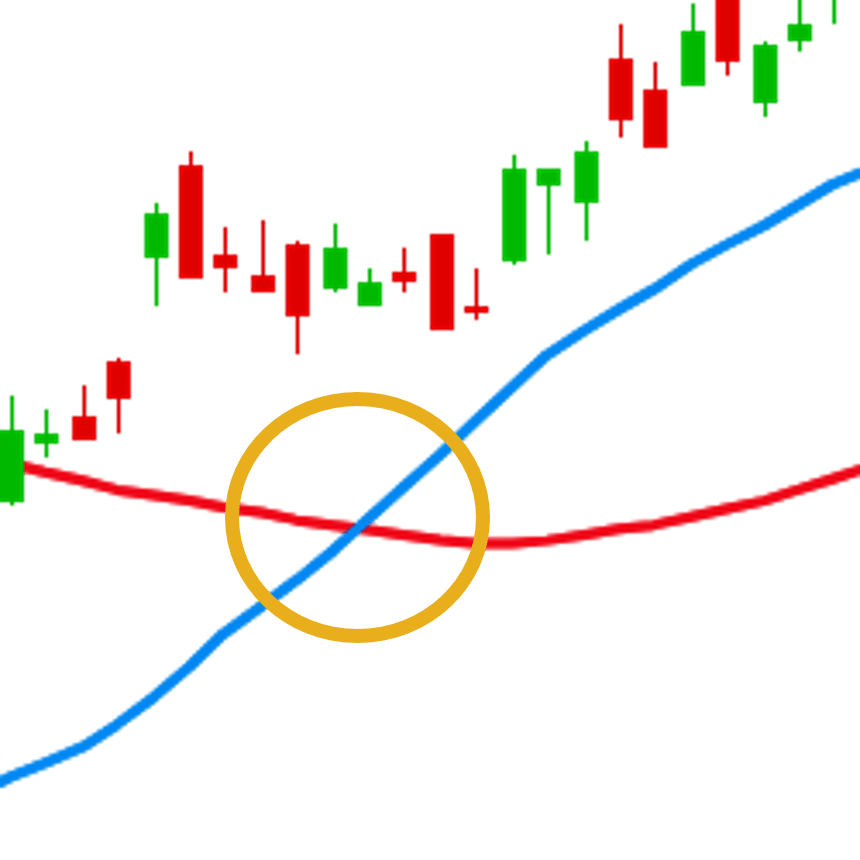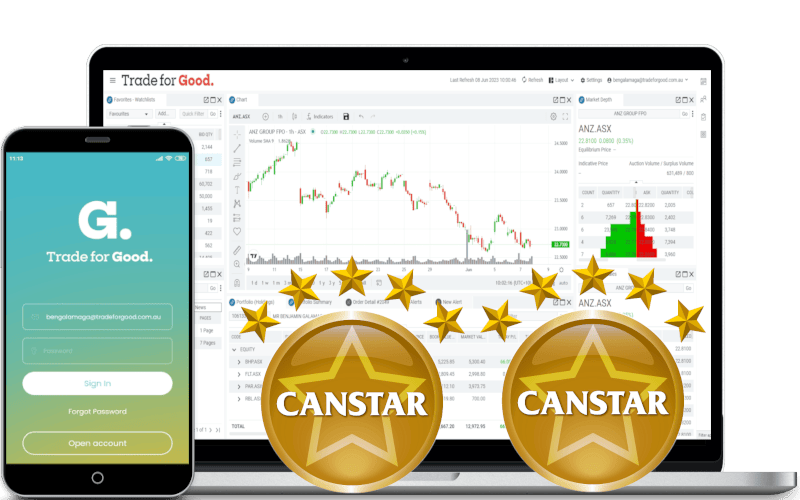
What is a Moving Average?
A moving average (MA) is a stock indicator commonly used to identify the trend direction of a stock and to determine its support and resistance levels.
Moving averages are widely used by investors and traders and are considered important trading signals.
What are Moving Averages used for?
Moving averages are used to understand and profit from the price movement patterns of securities and indices.
Moving averages are used to detect changes in momentum, providing visual confirmation that a change might be underway.
Commonly used Moving Average Periods
Depending on their trading objectives, investors choose different periods of varying lengths to calculate moving averages.
- Shorter moving averages, such as 20 or 50 bars, are typically used for short-term trading.
- Longer-term moving averages, like 200 bars, are more suited for long-term investors.
Uptrend
A rising moving average indicates that the stock is in an uptrend. This suggests that the stock’s price is generally increasing over time. One significant signal in an uptrend is a bullish crossover, which occurs when a short-term moving average (such as the 20-day MA) crosses above a longer-term moving average (like the 50-day MA). This crossover signals potential upward momentum and can be an indicator to buy, as it suggests that recent prices are higher than the longer-term average, reinforcing the uptrend.

Downtrend
A declining moving average indicates that the stock is in a downtrend. This suggests that the stock’s price is generally decreasing over time. One significant signal in a downtrend is a bearish crossover, which occurs when a short-term moving average (such as the 20-day MA) crosses below a longer-term moving average (like the 50-day MA). This crossover signals potential downward momentum and can be an indicator to sell, as it suggests that recent prices are lower than the longer-term average, reinforcing the downtrend.

Types of Moving Averages
Simple Moving Average (SMA)
The Simple Moving Average is calculated by taking the sum of the stock’s prices over a specified number of periods (or bars) and then dividing this sum by the number of periods. This provides the average price of the stock over those periods.
This calculation smooths out price data to identify the overall trend direction, removing the noise from random price fluctuations. The SMA is widely used due to its simplicity and effectiveness in trend analysis.
Exponential Moving Average (EMA)
The Exponential Moving Average (EMA) places more weight on recent prices, making it more responsive to new price changes compared to the Simple Moving Average (SMA).
The EMA calculation starts with the SMA as a base. It then applies a multiplier to give more weight to the most recent prices. This weighting factor smooths the data and ensures that the EMA responds more quickly to price changes.
The characteristics of the EMA are particularly useful for capturing recent price trends and reacting more swiftly to price movements.
Weighted Moving Average (WMA)
The Weighted Moving Average (WMA) assigns a heavier weighting to more recent data points, considering them more relevant than older ones. This makes the WMA more responsive to recent price changes compared to the Simple Moving Average (SMA).
 The WMA calculation involves multiplying each data point by a predetermined weight. These weights decrease linearly, giving the most recent data points more influence on the moving average. For example, in a 5-period WMA, the most recent price might be multiplied by 5, the second most recent by 4, and so on, down to 1. The sum of these weighted prices is then divided by the sum of the weights to produce the WMA.
The WMA calculation involves multiplying each data point by a predetermined weight. These weights decrease linearly, giving the most recent data points more influence on the moving average. For example, in a 5-period WMA, the most recent price might be multiplied by 5, the second most recent by 4, and so on, down to 1. The sum of these weighted prices is then divided by the sum of the weights to produce the WMA.

This method ensures that the WMA reflects recent price movements more accurately, making it useful for identifying short-term trends and making more timely trading decisions.
Simple Moving Average vs. Exponential Moving Average
The Exponential Moving Average (EMA) places more emphasis on recent data points compared to the Simple Moving Average (SMA). This makes the EMA more responsive to recent price movements, allowing it to reflect changes in market trends more quickly.
In comparison to the SMA, the EMA (and similarly, the Weighted Moving Average or WMA) reacts faster to price changes because it gives more weight to the most recent prices. For instance, over a 15-bar period, the EMA will adjust more swiftly to a new price than the SMA, which treats all data points equally.
This characteristic makes the EMA particularly useful for traders looking to capture short-term market movements and trends. The EMA can provide earlier signals for buy or sell actions because it adapts more rapidly to price fluctuations. In contrast, the SMA is better suited for identifying longer-term trends as it smooths out short-term volatility, providing a clearer picture of the overall trend.
In summary, while both the EMA and WMA are more sensitive to recent price movements compared to the SMA, the EMA’s exponential weighting makes it particularly effective for short-term trading strategies, where timely responses to price changes are crucial.

What is a Golden Cross?
A golden cross is a bullish chart pattern that occurs when a short-term moving average crosses above a long-term moving average. This event is considered a bullish breakout signal by technical analysts.
The significance of a golden cross lies in its indication of a potential uptrend reversal or continuation. When the short-term moving average (such as the 50-day MA) crosses above the long-term moving average (like the 200-day MA), it suggests that recent price trends are stronger than longer-term trends. This crossover often signals increased buying momentum and investor confidence in the stock or market.
 Traders and investors often interpret a golden cross as a buy signal, anticipating further price increases. However, the effectiveness of the golden cross as a predictive tool may vary depending on market conditions and the reliability of the moving averages used.
Traders and investors often interpret a golden cross as a buy signal, anticipating further price increases. However, the effectiveness of the golden cross as a predictive tool may vary depending on market conditions and the reliability of the moving averages used.
In summary, the golden cross is a technical analysis tool used to identify potential bullish trends and trading opportunities based on the relationship between short-term and long-term moving averages.
How do you add the Moving Average to a chart?
- In the chart, click on the indicators

- Search and select Moving Average

- To modify, click on the Settings Cog to select the MA type and values

- To save the Moving Averages to a chart template, click on the Disk Icon

- Then type in the name and press Enter, then you can view your moving average chart template on any chart at any time.

The Bottom Line
Moving averages are essential tools in technical analysis, providing insights into price trends by smoothing out short-term fluctuations. Their primary benefit is the ability to identify trend directions and potential reversal points, aiding in informed trading decisions. Simple Moving Averages (SMAs) and Exponential Moving Averages (EMAs) are widely used, with EMAs reacting more quickly to recent price changes.
However, moving averages also have downsides. They lag behind current prices, which can delay signals, and are less effective in volatile or sideways markets. Additionally, reliance on moving averages alone can lead to missed opportunities or false signals.

-
How to find where the indicators are and add them to charts?
Read More
You can download the offline guide here Moving Average Guide

What you learn here has been used in our Trade for Good software.
Click on the button to find our software education videos.
You can read more of our educational articles in the Trade for Good Learn section
Trade for Good Learn








